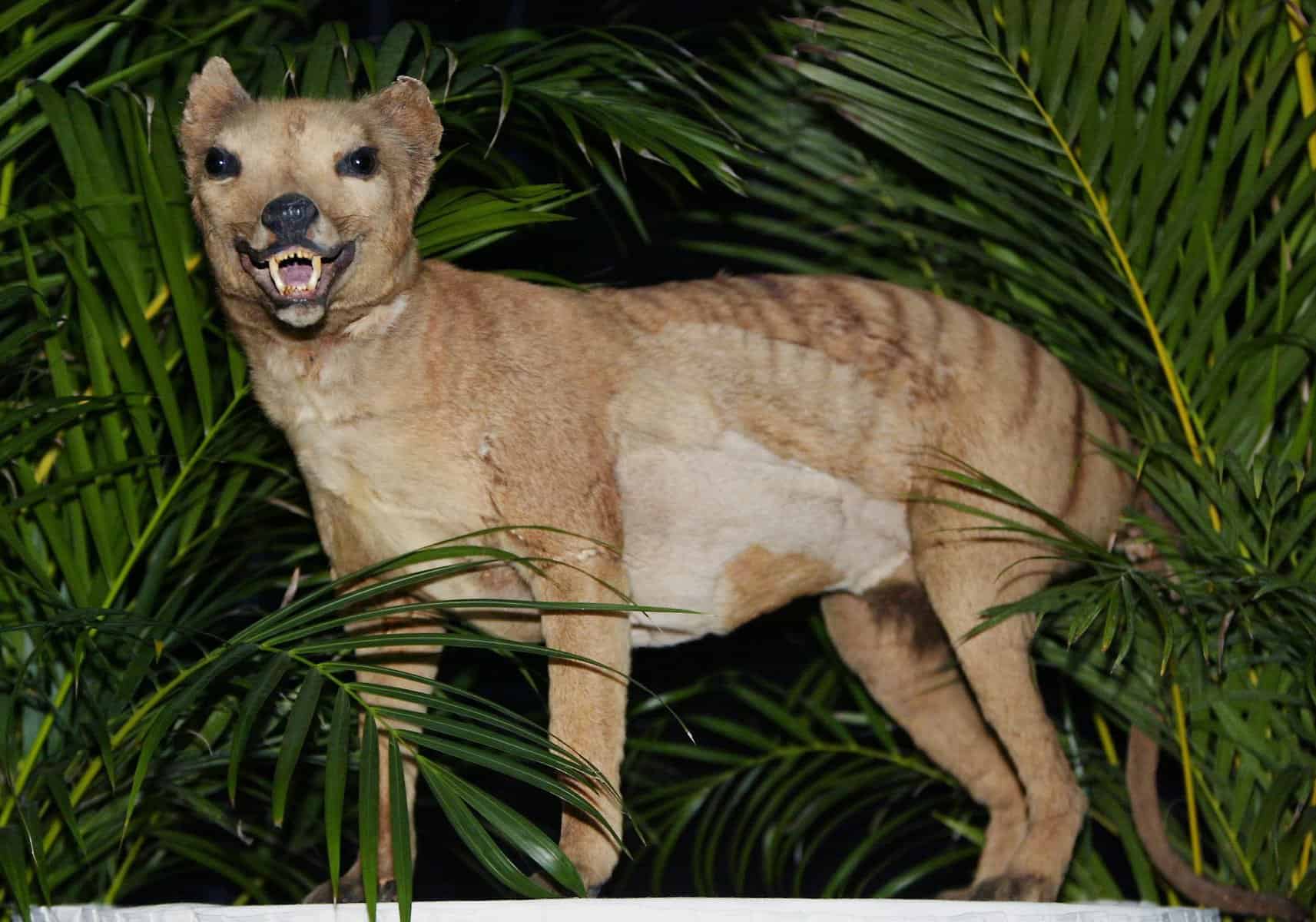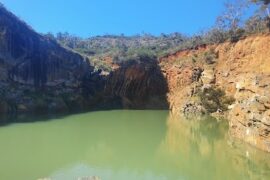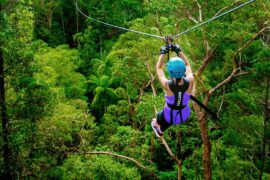Discover the Enigmatic Tasmanian Tiger: A Parent’s Guide to Nature’s Lost Treasure
Hello nature enthusiasts and knowledge-seeking parents!
? Are you ready to embark on a journey back in time to discover the marvels of the Tasmanian Tiger, a creature that has captured the imaginations of both young and old? This comprehensive guide will help you uncover the secrets of the thylacine, and provide a fun educational adventure for you and your children.
? The Tasmanian Tiger, also known as the thylacine, was a truly unique species that once roamed the forests and plains of Australia and Tasmania. Although sadly believed to be extinct, its legacy continues to fascinate and inspire. So grab a comfy seat, gather the kiddos, and let’s dive into a world where the Tasmanian Tiger still prowls through our collective curiosity!
The Thylacine: Understanding the Tasmanian Tiger
The Tasmanian Tiger (Thylacinus cynocephalus), despite its common name, was not a tiger at all, but rather a marsupial – the largest carnivorous marsupial of modern times. This means it carried its young in a pouch, like a kangaroo or a koala! This fascinating creature was native to Australia, Tasmania and New Guinea and is known for its distinctive striped back, which led to its nickname.
Did you know that the last known Tasmanian Tiger died in captivity in the Hobart Zoo in 1936? Such a recent disappearance sparks hope and enthusiasm for possible sightings, and while none have been confirmed, the mystique of the thylacine lives on!
The History and Habitat of the Thylacine
Understanding where the Tasmanian Tiger came from and how it lived is like piecing together a puzzle from the past. The history of the thylacine dates back to over 4 million years, an impressive lineage endangered by human activity and environmental pressures.
The Tasmanian Tiger was a nocturnal and shy animal, adapting to various habitats such as wetlands, grasslands, and forests. They were once commonly found across Tasmania, but by the time Europeans arrived, their numbers were dwindling in mainland Australia.
Physical Characteristics of the Tasmanian Tiger
Let’s take a closer look at what made the Tasmanian Tiger such a unique species:
- Size and Build: The thylacine was about the size of a medium-to-large dog, with males reaching up to 2.0 meters (6.6 feet) in total length, including the tail, and females slightly smaller.
- Striped Coat: One of the most recognizable features of the Tasmanian Tiger was its 15 to 20 dark stripes across its lower back and tail, which gave it its tiger-like appearance.
- Pouch: Both male and female thylacines had a pouch, which is quite rare among marsupials. The female’s pouch protected her young, while the male’s served as a protective sheath for the reproductive organs.
Understanding these key physical traits offers a window into the thylacine’s life. It’s an opportunity to explore the concept of biodiversity with your children – highlighting how each creature is uniquely adapted to its environment!
Thylacine Behavior and Diet
Curiosity about the Tasmanian Tiger’s day-to-day life abounds. They were apex predators in their ecosystem, playing a crucial role in maintaining the balance of their natural habitat. Their diet primarily consisted of:
- Small animals such as wallabies and birds
- Occasional carrion (dead animals)
- Reports suggest they were opportunistic hunters, adapting their habits to the food available.
We may never witness a Tasmanian Tiger stalking its prey or nurturing its young, but we can learn from what is left behind and foster a love for wildlife in our children. It’s essential to teach them the importance of every species in an ecosystem and how each one, no matter how small or seemingly insignificant, has an important role to play.
Stay tuned for the next installment in this fascinating guide where we’ll discus the ultimate fate of the Tasmanian Tiger, the conservation lessons learned, and its enduring legacy in culture and science. Let’s keep the memory of the thylacine alive for future generations!
Remember, exploring the mysteries of extinct animals like the Tasmanian Tiger can ignite a passion for conservation and science in our children, shaping them into the caretakers of our planet’s future. What a joy to teach them about these incredible creatures! Until next time, keep those inquisitive minds hungry for knowledge about the natural world!

5 Essential Things Parents Should Know in Preparing for Tasmanian Tiger Education
As you gear your family up for this adventure into the past, here are five essential tips to prepare for your deep dive into the world of the Tasmanian Tiger:
- 1. Foster a Learning Environment: Create an atmosphere at home where curiosity about the natural world is encouraged. You could decorate your children’s room with images of the Tasmanian Tiger or set up a ‘thylacine corner’ with books and toys related to this fascinating creature.
- 2. Interactive Learning: Children learn best when they can interact with the subject matter. Consider role-playing activities where kids can pretend to be wildlife explorers, or perhaps draw their own version of the Tasmanian Tiger and its habitat.
- 3. Utilize Multimedia Resources: There are numerous documentaries, online articles, and even augmented reality apps today that can help bring the story of the Tasmanian Tiger to life. These resources make learning more dynamic and memorable.
- 4. Emphasize Conservation: Forming a bridge between the extinction of the thylacine and the importance of conservation efforts today is vital. Discuss with your children how protecting the environment helps preserve the wildlife we still have with us.
- 5. Visit Museums or Zoos: If possible, plan a family outing to a natural history museum or zoo. Many such places have exhibits on extinct animals, including the Tasmanian Tiger, where you and your children can visualize and better understand the animal in a three-dimensional space.
By incorporating these tips into your preparation, you can create an informative and enjoyable learning experience about the Tasmanian Tiger for your entire family!
The Ultimate Fate of the Tasmanian Tiger
The story of the Tasmanian Tiger is not merely a tale from the past; it’s a poignant lesson for the present and the future. The decline of the thylacine population was largely due to human impact; extensive hunting for a bounty, habitat destruction, and competition from introduced species like dogs resulted in its tragic demise.
This narrative can serve as a starting point for discussions on extinction and how our actions affect the natural world. It illustrates the need for conscious efforts towards wildlife conservation and the protection of natural habitats.
Preserving the Legacy
Though the thylacine may no longer wander our forests, its cultural impact persists. The Tasmanian Tiger has become an emblem of mystery and a symbol of lost wilderness. It serves as a muse for artists, a captivating subject for scientists, and an important figure in Tasmanian heritage.
One excellent way to preserve its legacy is through storytelling. Share tales of the thylacine with your children and pass on the knowledge. Books, films, and even local folklore can keep the story of the Tasmanian Tiger alive in our collective memory.
The Thylacine in Science and Culture
The Tasmanian Tiger continues to teach us valuable lessons. In science, it’s studied for its unique biology and what it can tell us about evolution and extinction patterns. Culturally, it has been featured on coins, stamps, and even as mascots or logos, representing the enigmatic aura of a mysterious past.
By exploring these different facets of the thylacine’s impact, you and your children can appreciate the diverse ways in which a single species can influence our world, even long after it’s gone.
As you guide your children through the story of the Tasmanian Tiger, remember that you’re not just teaching them about history, but you’re also instilling in them the values of curiosity, empathy towards nature, and the importance of conservation. Enjoy this educational journey together, as the story of the Tasmanian Tiger enriches your family’s knowledge and appreciation of the natural world around us.
And who knows, as research and exploration continue, we might one day have an update on this story that defies all odds and expectations!
For more great fun click here. For more information see here
Disclaimer
The articles available via our website provide general information only and we strongly urge readers to exercise caution and conduct their own thorough research and fact-checking. The information presented should not be taken as absolute truth, and, to the maximum extent permitted by law, we will not be held liable for any inaccuracies or errors in the content. It is essential for individuals to independently verify and validate the information before making any decisions or taking any actions based on the articles.




